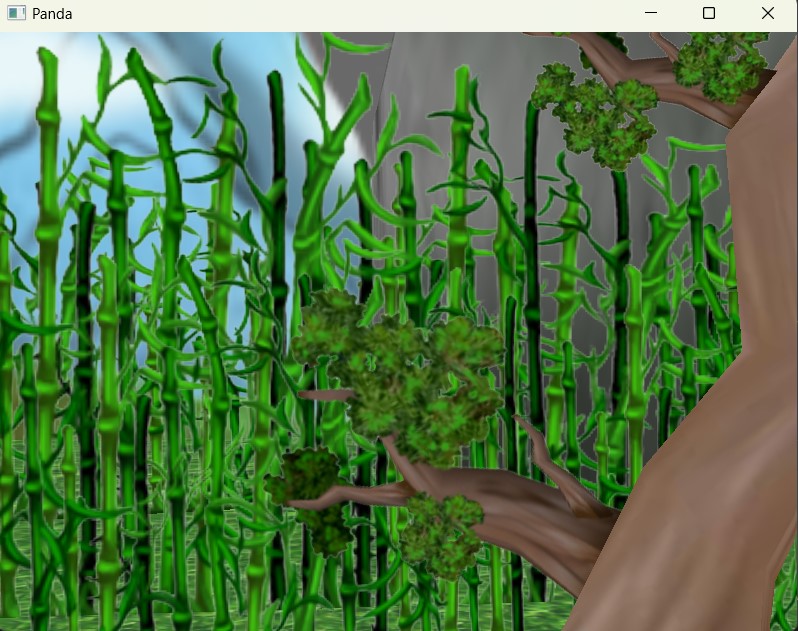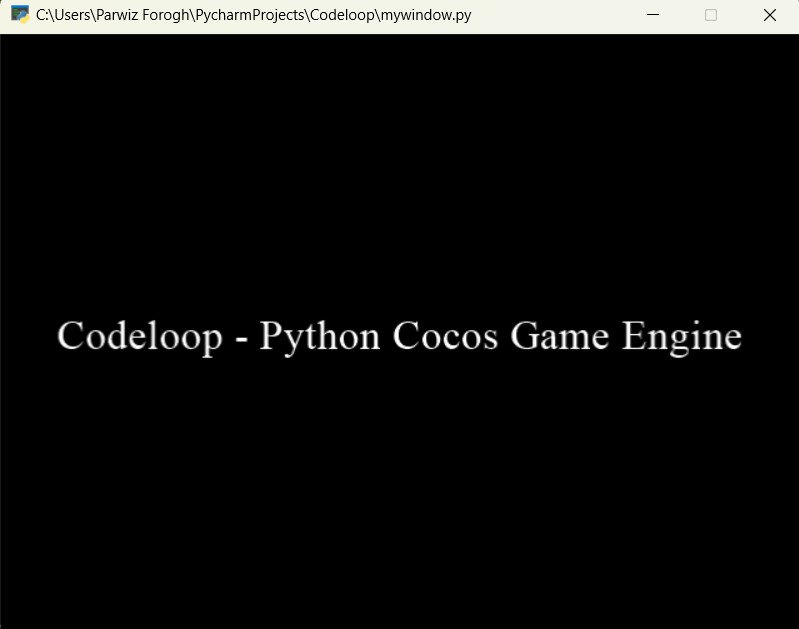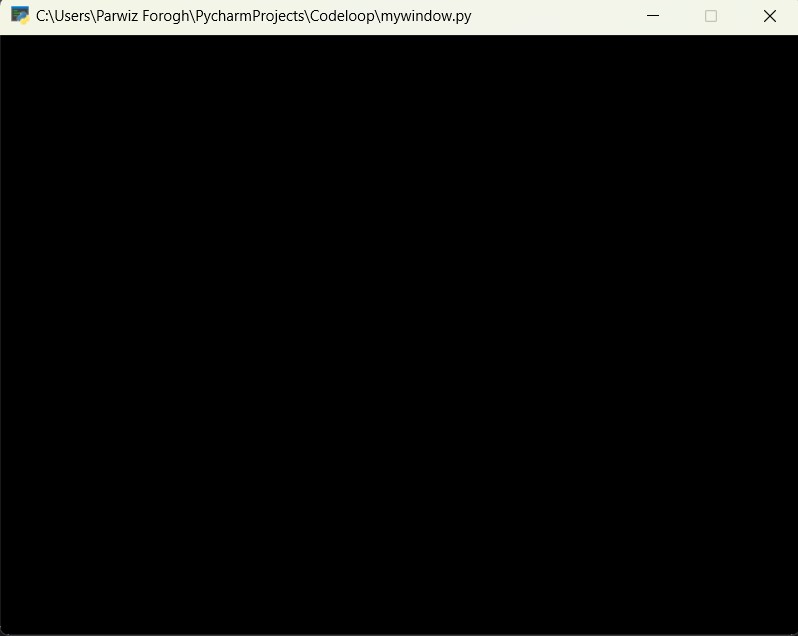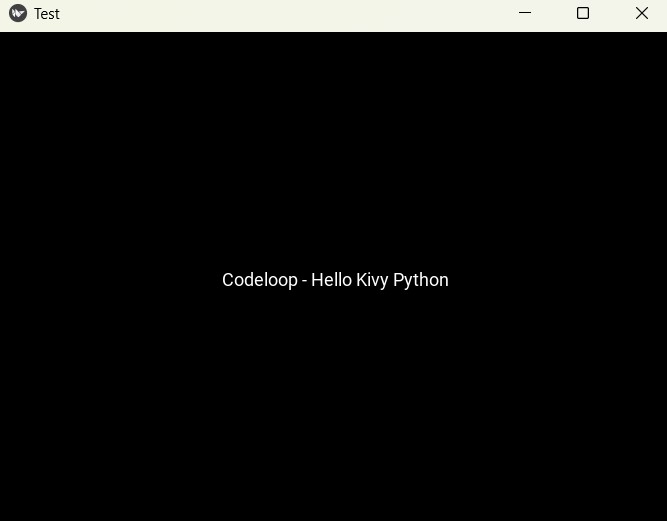In this Python article we are going to introduce Python Top 5 Game Libraries, we talk about these game libraries and game engines in Python, also we talk about the installation process and creating examples on these game libraries with Python Programming Language. there are different libraries in python that you can use for game development, we want to introduce some of them.
1. PyGame
Pygame is free and cross-platform Python modules designed for writing multimedia applications and video games. It includes computer graphics and sound libraries designed to be used with the Python programming language. pygame is built on top the SDL library, So SDL stands Simple DirectMedia Layer is a cross-platform development library designed to provide low level access to audio, keyboard, mouse, joystick, and graphics hardware via OpenGL and Direct3D. Like SDL, pygame is highly portable and runs on nearly every platform and operating system.
How to Install Pygame?
You can use pip for the installation
|
1 |
pip install pygame |
Creating first game example in Python with Pygame library
|
1 2 3 4 5 6 7 8 9 10 11 12 13 14 15 16 |
import pygame pygame.init() screen = pygame.display.set_mode((400,300)) done = False while not done: for event in pygame.event.get(): if event.type == pygame.QUIT: done = True pygame.display.flip() |
Run the complete code and this is the result.

2. Panda3D
Panda3D is an open-source, completely free to use engine for realtime 3D games, visualizations, simulations, experiments you name it! Its rich feature set readily tailors to your specific workflow and development needs. Panda3D puts you at the helm, without getting in your way. The full power of the graphics card is exposed through an easy-to-use API. Panda3D combines the speed of C++ with the ease of use of Python to give you a fast rate of development without sacrificing on performance. Panda3D is completely free to use with no royalties, license payments, registration or costs of any sort—even for commercial use. The source code is available for anyone to study and to modify under the terms of the permissive BSD license.
How to Install Panda3D
You can simply install Panda3D via pip
|
1 |
pip install Panda3D |
Creating first game example in Python with Panda3D library
|
1 2 3 4 5 6 7 8 9 10 11 12 13 14 15 16 17 18 19 |
from direct.showbase.ShowBase import ShowBase class MyApp(ShowBase): def __init__(self): ShowBase.__init__(self) self.scene = self.loader.loadModel("models/environment") self.scene.reparentTo(self.render) self.scene.setScale(0.25, 0.25,0.25) self.scene.setPos(-8, 42, 0) app = MyApp() app.run() |
Run the code and this will be the result

3. Cocos2D
Cocos2d is an open source framework that is used to build 2D games, and other cross-platform GUI-based interactive programs. It is written in Python using pyglet library. It Targets the Operating Systems linux, mac or windows on Pc-like hardware. Cocos2d’s core element is sprite. Basically, it is a simple 2D image that can also contain other sprites. They can be moved, scaled, rotated, have their image changed, etc.
How to Install Cocos2D?
You can use pip for the installation
|
1 |
pip install cocos2d |
Creating first game example in Python with Cocos2D library
|
1 2 3 4 5 6 7 8 9 10 11 12 13 14 15 16 17 18 19 20 21 22 23 24 25 26 |
import cocos class MyApp(cocos.layer.Layer): def __init__(self): super(MyApp, self).__init__() label = cocos.text.Label('Codeloop - Python Cocos Game Engine', font_name='Times New Roman', font_size=25, anchor_x='center', anchor_y='center') label.position = (320, 240) self.add(label) def main(): cocos.director.director.init() app_layer = MyApp() main_scene = cocos.scene.Scene(app_layer) cocos.director.director.run(main_scene) if __name__ == "__main__": main() |
Run the complete code and this is the result.

4. Pyglet
Pyglet is a cross-platform windowing and multimedia library for Python, intended for developing games and other visually rich applications. It supports windowing, user interface event handling, OpenGL graphics, loading images and videos, and playing sounds and music. pyglet works on Windows, OS X and Linux.
Some of the features for pyglet
- No external dependencies or installation requirements.For most application and game requirements, pyglet needs nothing else besides Python, simplifying distribution and installation.
- Take advantage of multiple windows and multi-monitor desktops.pyglet allows you to use as many windows as you need, and is fully aware of multi-monitor setups for use with fullscreen games and applications.
- Load images, sound, music and video in almost any format.pyglet can optionally use ffmpeg to play back audio formats such as MP3, OGG/Vorbis and WMA, and video formats such as DivX, MPEG-2, H.264, WMV and Xvid.
- pyglet is provided under the BSD open-source license, allowing you to use it for both commercial and other open-source projects with very little restriction.
- Supports Python 2 and 3.Pick your favorite!
How to Install Pyglet?
You can simply install Pyglet via pip
|
1 |
pip install pyglet |
Creating first game example in Python with Pyglet library
|
1 2 3 4 5 6 7 8 9 10 11 12 13 14 |
import pyglet window = pyglet.window.Window() @window.event def on_draw(): window.clear() pyglet.app.run() |
Run the complete code and this is the result

5. Kivy
Kivy is Open source Python library for rapid development of applications that make use of innovative user interfaces, such as multi-touch apps. Also it is used for game development. Kivy runs on Linux, Windows, OS X, Android, iOS, and Raspberry Pi. You can run the same code on all supported platforms.mostly it is used for GUI Development in Python, but you can also use kivy for game development.
How to Install Kivy?
First of all you need to install the dependency for kivy
|
1 |
pip install docutils pygments pypiwin32 kivy.deps.sdl2 kivy.deps.glew |
After that you can install kivy
|
1 |
pip install kivy |
Creating first game example in Python with Kivy library
|
1 2 3 4 5 6 7 8 9 10 11 |
from kivy.app import App from kivy.uix.label import Label class TestApp(App): def build(self): return Label(text = 'Codeloop - Hello Kivy Python') TestApp().run() |
Run the code and this is the result

FAQs:
What is the best Python library for games?
There isn’t a single best Python library for games as it often depends on the specific requirements of your project. But some popular choices are Pygame, Arcade, and Panda3D. Pygame is well established library and Arcade offers simplicity and modern features. Panda3D is known for its capabilities in creating complex 3D games.
What is the Python library for video games?
Pygame is one of the most popular Python libraries for creating video games. It provides functionality for handling graphics, sound, input devices, and other aspects essential for game development. Also Arcade and Panda3D are other notable libraries specifically designed for building games in Python.
Which game engines use Python?
Several game engines support Python scripting for game development. Unity is one of the most popular game engine, and it allows Python scripting through plugins like PyUnity. Unreal Engine also provides support for Python through its Unreal Python Plugin. Also Godot Engine, it is free and open-source game engine, it natively supports Python scripting for game logic and development.
Subscribe and Get Free Video Courses & Articles in your Email